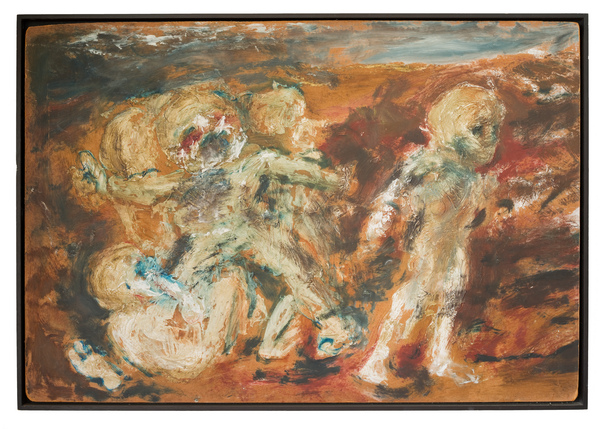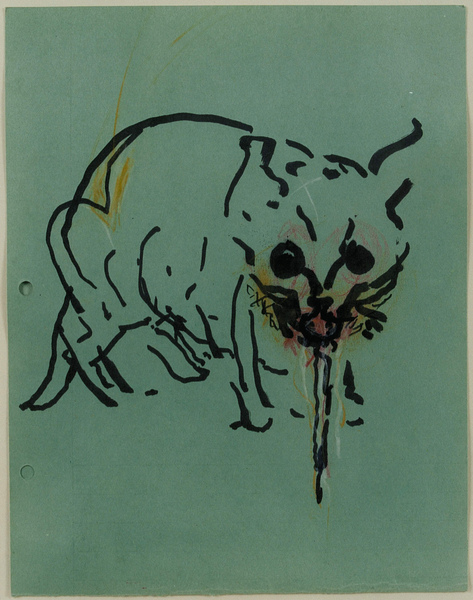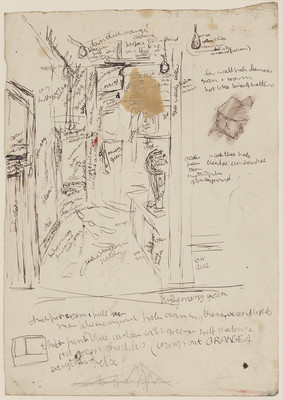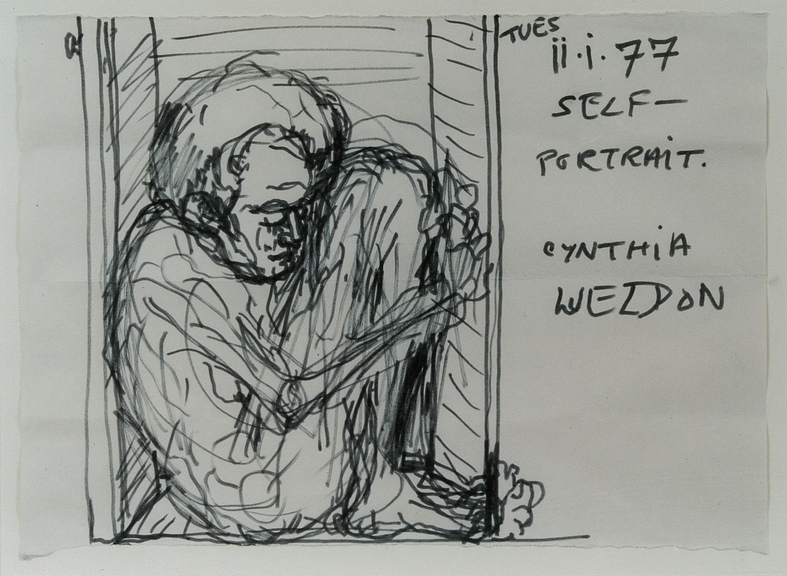Cynthia Pell
Born 1933
Died 1977
Other name(s) Cynthia Weldon
Biography
Cynthia Pell was a London-based artist, whose prestigious talent was recognised early with the award of a national art competition in her final year at school. She proceeded to study at Bournemouth Art College and Camberwell Art College in the 1950s. Upon finishing art school, she was given a solo exhibition at the Beaux Gallery, London, in 1957. However, all was not well and after the exhibition, she burned her unsold work on the pavement outside. This was a destructive pattern that recurred throughout her short life. In 1961, Pell was admitted to St Bernards Hospital, Southall, where she was a patient on-and-off over the following decade. Adverse reactions to treatments administered at St Bernards (including psychoanalysis and drugs) led to admission at Bexley Hospital in the 1970s. Time with art therapist Britta von Zweigbergk at the latter institution presented the opportunity for her to draw self-portraits and scenes on the ward.
Following her death, a group of friends and family, including Paula Rego, organised a memorial show at Orleans House Gallery, Twickenham (July/September 1999), followed by another retrospective at the Boundary Gallery (November/December 2000). The latter exhibition was triggered by a discovery that von Zweigbergk had a collection of 122 drawings by Pell from her time at the institution.
Artwork Information
Study of a Girl (1955) and Portrait of an Adolescent (1955)
In 1955 Pell spent a couple of months staying in a farmhouse in Provence, France, with a group of five others including her recently-wed husband, Ron Weldon. During this time, she produced many drawings and paintings of local peasants and gipsies, as described by fellow artist Evelyn Williams: ‘These peasants were the people Cynthia drew and painted. They seemed pleased to sit for her – she treated them with great consideration and charmed them with her friendly approach.’ To draw the gipsies in Provence, Pell visited ‘some very wild areas’, according to friend and visitor, Prue Miskin. In these places, the ‘children clamoured round as she gave them cash to sit. There was terrible poverty with babies with sores and flies – splotched with violet antiseptic – but what wonderful strong drawings she did, so solid and passionate and fast.’
Lost Figures (1960) and My Parents (1957)
Both paintings by Cynthia Pell in The Women’s Art Collection convey an intense emotional quality. Head in his hand with steely-green skin, the male figure in My Parents is captured in a state of despair. Pell is known to have had a closer relationship with her father than mother, which is perhaps conveyed in the tenderness of her father’s emotional struggle. The items on the table appear disjointed, with the cutlery awkwardly positioned, mirroring the father’s broken psychological state and the mother’s non-tactile or uncommunicative response. Perhaps describing this very painting, friend of the artist, Natalie Dower, recalled her reaction when Pell described how she had burnt the unsold works from the Beaux Art Gallery exhibition: ‘I was horrified and she said “Well, if you’d like a painting you can have one”. I said that I would, which is how I came to own the painting of her parents.’
Lost Figures is expressive nearly to the point of abstraction. The muddied colours in the top left-hand corner of the canvas create an ominous atmosphere, while the furore of tangled and violent bodies add to this distressed state of physicality. At Camberwell, Pell studied under Martin Bloch, whose tutelage provided her with a direct link with German Expressionism. Yet, the expressive brushstrokes convey a broken life which is authentically Pell’s own.
Study for a Room (1976), Self-Portrait in Cupboard (1977), and Cat Vomiting (1976)
Cynthia Pell was admitted to the psychiatric institution Bexley Hospital, Kent, in 1973. Here, she befriended the art therapist, Britta von Zweigbergk, who became unofficial keeper of the work produced by Pell in the institution. Von Zweigbergk (2002) described how ‘Her drawings and paintings were her dispatches often sent in a hurry with scant regard for personal safety, the art therapy department acting as a base from which her materials were supplied. In her pictures, Cynthia portrayed scenes from the daily life of the hospital, of her own suffering and that of other patients with great simplicity and feeling.’ The half-legible notes-to-self scrawled on Study for a Room and Self-Portrait in Cupboard attest to her observational impulse.
Cat Vomiting represents an everyday part of hospital life at Bexley. There was a large population of feral cats at the institution. Patients became attached to certain cats, and often food and milk was left out for them in the wards. According to von Zweigbergk, ‘she [Pell] would often find the time to sit and to sketch them eating and drinking, even being sick’.
The body of works produced during this time formed the book Cynthia Pell: the Bexley Hospital Drawings and the accompanying exhibition at the Boundary Gallery, London (2000).
[Source: Britta von Zweigbergk, with thanks]








